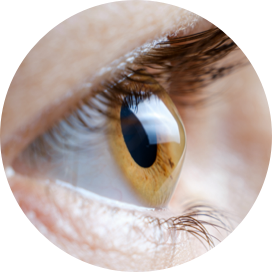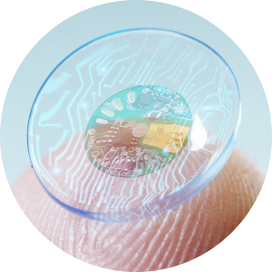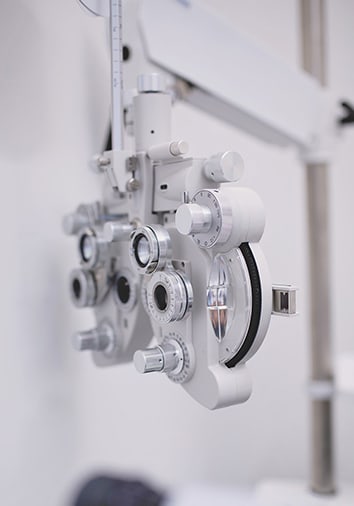An autoimmune disease is when the body’s immune system mistakenly attacks its healthy cells. While the development of dry eye disease is not fully understood, there is recognition that inflammation plays a role.
The question then is whether or not dry eye syndrome is an autoimmune disease or if it’s a symptom of autoimmune diseases.
Dry eye is not an autoimmune disease but can be associated with autoimmune disorders, such as Sjogren’s disease, rheumatoid arthritis, or lupus.
When you experience dry or irritated eyes, it can be confusing as to the cause. With the help of an eye exam, your eye doctor can determine the underlying cause and recommend treatment options to relieve your symptoms.
What Is Dry Eye Syndrome?
Dry eye syndrome occurs when your eyes don’t produce enough tears to keep them lubricated, or the tears are poor quality because of an imbalance in the tear film. Symptoms of dry eye syndrome include:
- Burning sensation
- Gritty feeling in the eyes
- Eye pain
- Redness
- Watery eyes
- Stringy mucus
- Eye fatigue
- Blurry vision
- Sensitivity to light
- Difficulty wearing contact lenses
Causes of Dry Eye Syndrome
The tears in your eyes help to focus light so you can see, moisturize the eyes, and protects them by keeping out dust and debris. Tears have three layers:
- The oily layer is the outer layer that prevents tears from drying up too quickly to maintain a smooth eye surface.
- The watery or aqueous layer is the middle layer that keeps the eyes wet.
- The mucus layer is the inner layer that helps the tear film stick to the eye’s surface for even spreading.
There are various reasons for a decrease in tear production or an increase in tear evaporation. Underlying causes of decreased tear production can include:
- Aging: Your eyes produce fewer tears as you age. It’s also more common in women because of hormonal changes.
- Certain medicines: These can include antihistamines, decongestants, hormone replacement therapy, antidepressants, diuretics for high blood pressure, and beta-blockers.
- Long-term contact lens wear.
- Blepharitis or inflammation of the eyelids
- Environmental factors, such as wind, smoke, or dry air
- Refractive eye surgery, such as LASIK
- Certain medical conditions: Allergic eye disease or vitamin A deficiency.

Dry Eye and Autoimmune Diseases
One of the risk factors for developing dry eye syndrome is an autoimmune disease. And a common thing in autoimmune diseases is inflammation. This inflammation can affect other body parts, including the eyes, by damaging your tear glands.
Autoimmune diseases that can cause dry eyes:
Sjogren’s Syndrome
The most common symptoms of Sjogren’s are dry eyes and mouth. Sjogren’s syndrome is a chronic autoimmune disease where the body attacks the mucous-producing membranes and secreting glands in the eyes and mouth.
Decreased tears from the lacrimal glands can cause eyes to burn, itch, or feel gritty.
Rheumatoid Arthritis
Rheumatoid arthritis can be associated with Sjogren’s disease. It’s an inflammatory autoimmune disease that affects the joints but can also affect the eyes.
Inflammation causes abnormalities in the tear glands, which significantly reduces fluid secretion. Besides dry eyes, other symptoms include redness, blurry vision, and a feeling of debris in the eye.
Lupus
Lupus is another autoimmune disease associated with Sjogren’s that causes inflammation in the body but can also cause dry eyes. In lupus, the inflammation affects the eye and surrounding tissues of the eye.
It can affect the lacrimal glands and the meibomian glands that express the oil in tears. Symptoms include dry eyes, eye discomfort, and blurry vision.
Thyroid Disorders
An autoimmune thyroid condition that causes dry eyes includes Grave’s disease, also known as thyroid eye disease. The immune system can attack the eyes because specific proteins in your eyes are similar to thyroid tissue.
Grave’s disease also affects the muscles around the eyes. It causes the upper eyelid to pull up and the lower eyelid to pull down, preventing them from closing and leading to the evaporation of tears.
With insufficient tears or not enough oil secreted, you can experience dry eyes and other symptoms, such as a gritty feeling and itchy, burning, or sore eyes.
Treatment for Dry Eye Syndrome
Treatment for dry eyes will depend on the underlying cause and the severity of your symptoms. But generally, if it’s from an autoimmune disease, treating inflammation can help.
Other treatment options to relieve dry eye symptoms can include:
- Therapeutic eye drops
- Contact lenses for dry eyes
- Eyelid scrubs
- Punctal plugs
- Lubricating inserts
- OptiLight by Lumenis
Lasting Dry Eye Relief
With so many factors affecting the quality and quantity of your tears, a one size fits all approach to treatment won’t help relieve symptoms.
If you are experiencing symptoms of dry eye syndrome, book an appointment with Daniel Island Eye Care. Our eye doctors can help you find the underlying cause of your dry eyes and provide the right treatment plan.
























